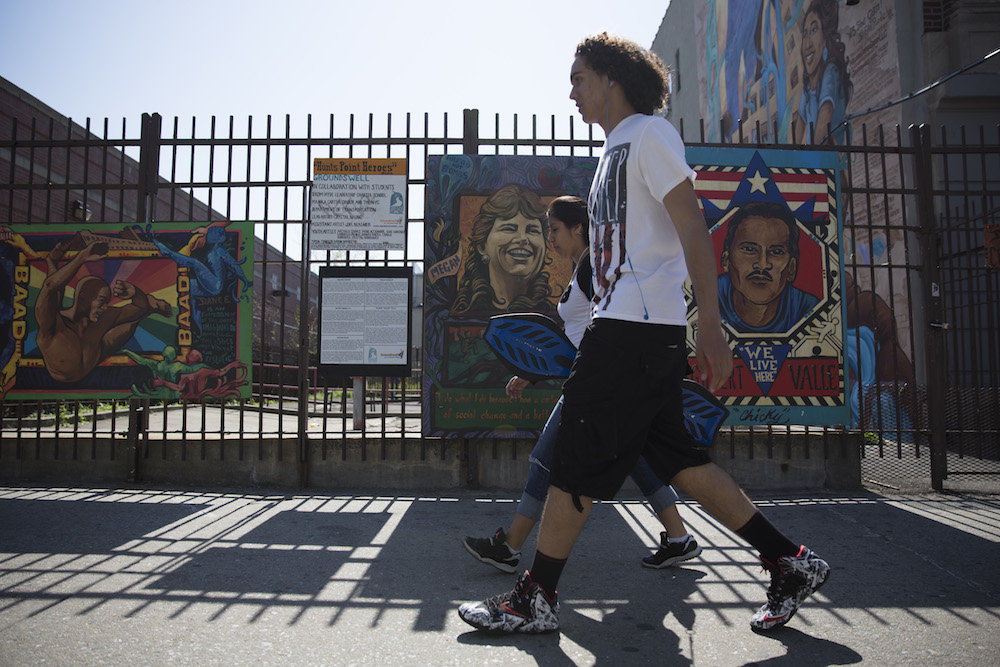Hunts Point:
at a crossroads
Hunts Point is one of New York’s most crucial and underserved neighborhoods. Home to some of the largest wholesale markets in the world, the area and supplies more than half of the city’s produce, meat and fish. If Hurricane Sandy had struck only a few hours earlier at high tide, the peninsula would have suffered much greater flooding.
Hundreds of millions of dollars have been promised by the federal and local government to help fortify the markets and coastline, but many residents say they could use more.
At this potential turning point, they’re doing everything they can to protect their neighborhood from outside forces and remain resilient for whatever comes next.

FEMA created three Preliminary Work Maps (PWMs) to illustrate the areas of Hunts Point that are endangered by flooding. FEMA splits the flooding into three 100-year floodplains; over the next 100 years from the start of the projections, there is a one percent or greater chance that flooding will occur. The risk to Hunts Point increases with time; by 2050, flooding could reach deep into the peninsula. Hotspot illustration by Pat Donachie. Map modified from original in the NYC report, A Stronger, More Resilient New York
Preparing for the next superstorm
Hunts Point avoided the worst predictions during Hurricane Sandy; the storm hit at low tide, which left the neighborhood’s peninsula relatively unscathed. But the projections for the next storm indicate that the Point’s large distributors, small businesses and food markets are at risk.
Millions of New Yorkers and 23,000 restaurants could have lost access to food, residents could have been threatened with the release of hazardous chemicals, and repairs could have been in the billions. Finally, 12,000 jobs lie in the path of potential flooding, jobs which could have been lost forever.
In response, community organizations, business owners, and government representatives have taken the initiative to protect the neighborhood in case it’s not as lucky next time.
Modernizing the markets
New York runs on Hunts Point’s wholesale food markets, but aging infrastructure and the risk of coastal flooding have put them in jeopardy. Federal and city funding has been promised to help support this crucial distribution hub. We spoke to business owners at the produce, meat and fish markets to find out what they really need to keep feeding New Yorkers for years to come.
According to the 2013 American Community survey, the poverty rates in Hunts Point and its neighboring communities Mott Haven and Port Morris are twice as much as New York City. Overall, Hunts Points poverty rates are higher than each of the five boroughs.
Revitalization without gentrification?
Home to one of the world’s largest food distribution centers, the Hunts Point Cooperative Market, Hunts Point is easily accessible from throughout Manhattan by subway lines and expressways. As Brooklyn, Queens and Manhattan transform rapidly, real estate developers have shifted their focus to the South Bronx. Hunts Point residents now worry that their neighborhood may become too popular. They want to make Hunts Point a model of revitalization, but without gentrification.






